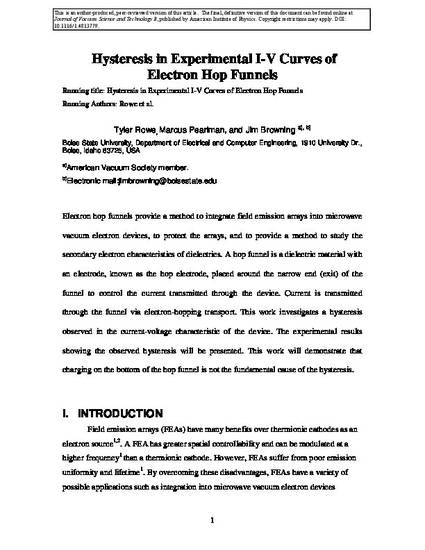
Electron hop funnels provide a method to integrate field emission arrays into microwave vacuum electron devices, to protect the arrays, and to provide a method to study the secondary electron characteristics of dielectrics. A hop funnel is a dielectric material with an electrode, known as the hop electrode, placed around the narrow end (exit) of the funnel to control the current transmitted through the device. Current is transmitted through the funnel via electron-hopping transport. This work investigates a hysteresis observed in the current–voltage characteristic of the device. The experimental results showing the observed hysteresis will be presented. This work will demonstrate that charging on the bottom of the hop funnel is not the fundamental cause of the hysteresis.
Copyright 2013 American Vacuum Society. This article may be downloaded for personal use only. Any other use requires prior permission of the author and the American Vacuum Society. The following article appeared in Journal of Vacuum Science and Technology B, volume 31(4), and may be found at http://dx.doi.org/10.1116/1.4813779.
Available at: http://works.bepress.com/jim_browning/26/
